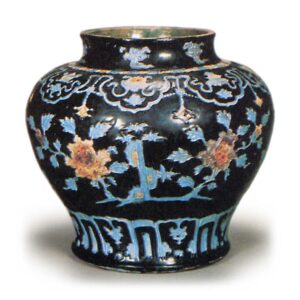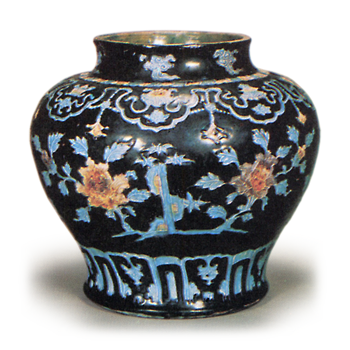
A Chinese term for a floating pattern. Also called “convex diao,” it is a type of pottery in which a floral motif is raised on a base metal in a yang pattern. Hoka wares began to be produced in the Yuan dynasty of China and flourished in the Ming dynasty. The indigo is like that of deep-colored gemstone indigo, the purple is like that of deep-colored purple crystal, and the yellow is like transparent amber, with many patterns of creatures, plants, and flowers. Those made in Huoju, Pingyang Prefecture, are semi-tile, and emit an almost violet indigo or black green color, but they are not elaborate. Those made in Xi’an and Henan are more vivid and beautiful than those made in Huoju, Pingyang. This is because they belong to the womb. The floral patterns are beautiful and the geology is detailed, and the figures, birds, and animals are shown in great detail. Although they were occasionally copied after the Yongzheng reign (1723-35), there were no more good craftsmen. Therefore, although Ch’ien-lung (1736-95) wares are exquisite, they are rare in the range of diaojiaolus and comparable to the ancient vessels of the Nyuhua period. The rest of the pieces are noteworthy.



